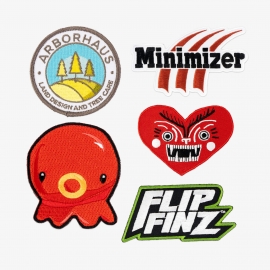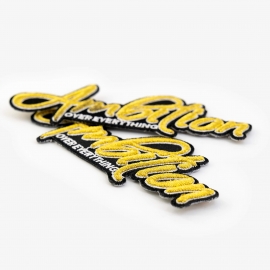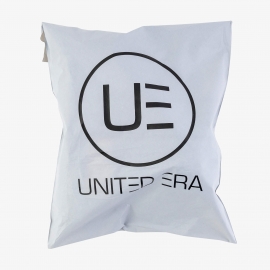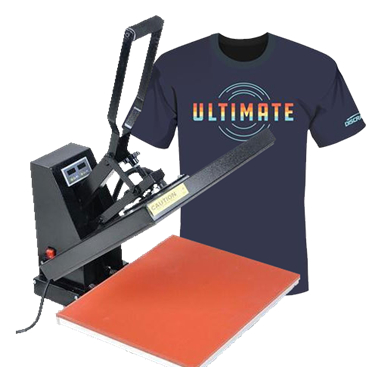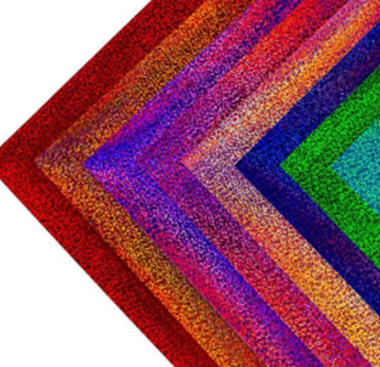With the upgrading of global clothing, in order to meet the needs of customers, the craftsmanship on clothing changes with each passing day. Even the heat transfer process is complex.
What's heat transfer printing? In short, the pattern is transferred to the clothes through high temperature and certain pressure.
So what is the heat transfer printing?
Today we will explain the most commonly used processes:
1.Plastisol heat transfer. Igingle uses materials to name this type. It has two types of products. When you touch it with your hands, you will feel a thin film.
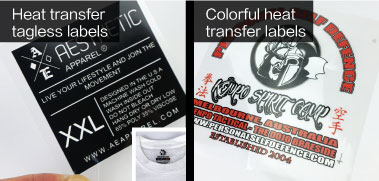
A.heat transfer tagless labels. Most of this type are used for heat transfer of water wash label type. Previously, short-sleeved collars were achieved by sewing woven labels. Then XS, S, M, L, XL, etc. have to be sewn separately.
Some customers have sensitive skin and are allergic to the label here. So now a lot of short sleeve collars are replaced with heat transfer. It will have the company brand, web address, size of clothes and so on. Completely combined with fabrics, there are currently customers who have found skin allergies to this, including infants. The color of this type of craft trademark can be up to 5 colors.
B.colorful heat transfer labels. This type of process is mostly used for patterns with many colors. Because the design of this heat transfer can automatically recognize the color inside the pattern. Just like printing books, the ink is automatically printed on the PE film. He is mainly used on the chest of the clothes, front or back.
2.Sublimation heat transfer. This type of process is the most common on the market and has the widest range of uses.
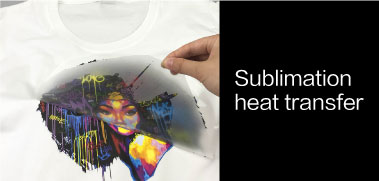
It is not only used on clothes, but also many badges, lanyards, pillows. The pattern is printed on the thermal transfer paper by a printer, and then transferred to the clothes by high temperature. Because of its mundane and ordinary, most brand companies like it. Give customers a cheap feeling. Once this process is transferred to clothes, you can't touch it with your hand, you can only see it. Customers who do not understand this process think it is the yarn of clothes.
3. Heat transfer vinyl, which is what most customers call HTV. It belongs to lettering film products. There are PU, giltter, Holographi, reflective,glow in dark and other effects.
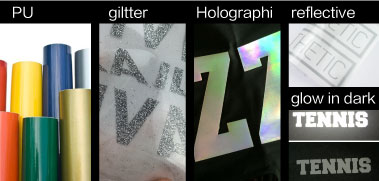
Most customers purchase a whole roll of heat transfer vinyl products, and then purchase a Vinyl cutter by themselves. Make the desired pattern on the computer, and then the vinyl cutter automatically runs to cut Vinyl. Remove the waste so that the sub-pattern will appear on the vinyl. Note: This product can only be made in one color. If you are going to do multicolor, it is very troublesome.
4. Flocking heat transfer.
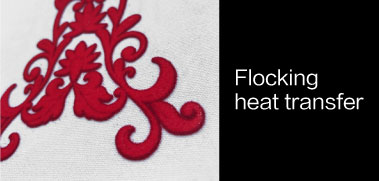
Flock is the material for this type of heat transfer. On the transferred clothing, there is a raised feeling, soft like velvet. This makes it perfect for children's clothing and sweatshirts.
5. Reflect heat transfer. Provides visibility of clothing under lighting conditions; making it an ideal choice for night safety clothing, night running clothing, etc.
There are two processes for this type of heat transfer,
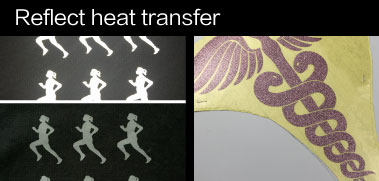
A.The lettering film process is the third type of HTV mentioned in the article.
B. Through the screen printing process, the reflective material is printed on the PE film, and then transferred to the clothes.
6. Silicone heat transfer. This is often referred to as 3D heat transfer printing on the market. Its thickness is generally between 0.8mm-0.6mm. Logo design in up to 4 colors. Made of silicone material, the touch is very soft and does not hurt the skin.
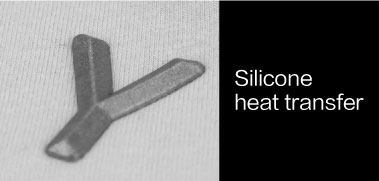
This article lists the most commonly used heat transfer printing. There are many types that are not mentioned. Such as puff, sequin, etc. ,
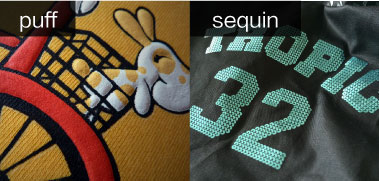
If you have other questions, please contact us. Thank you!
 ⁄ USD
⁄ USD
